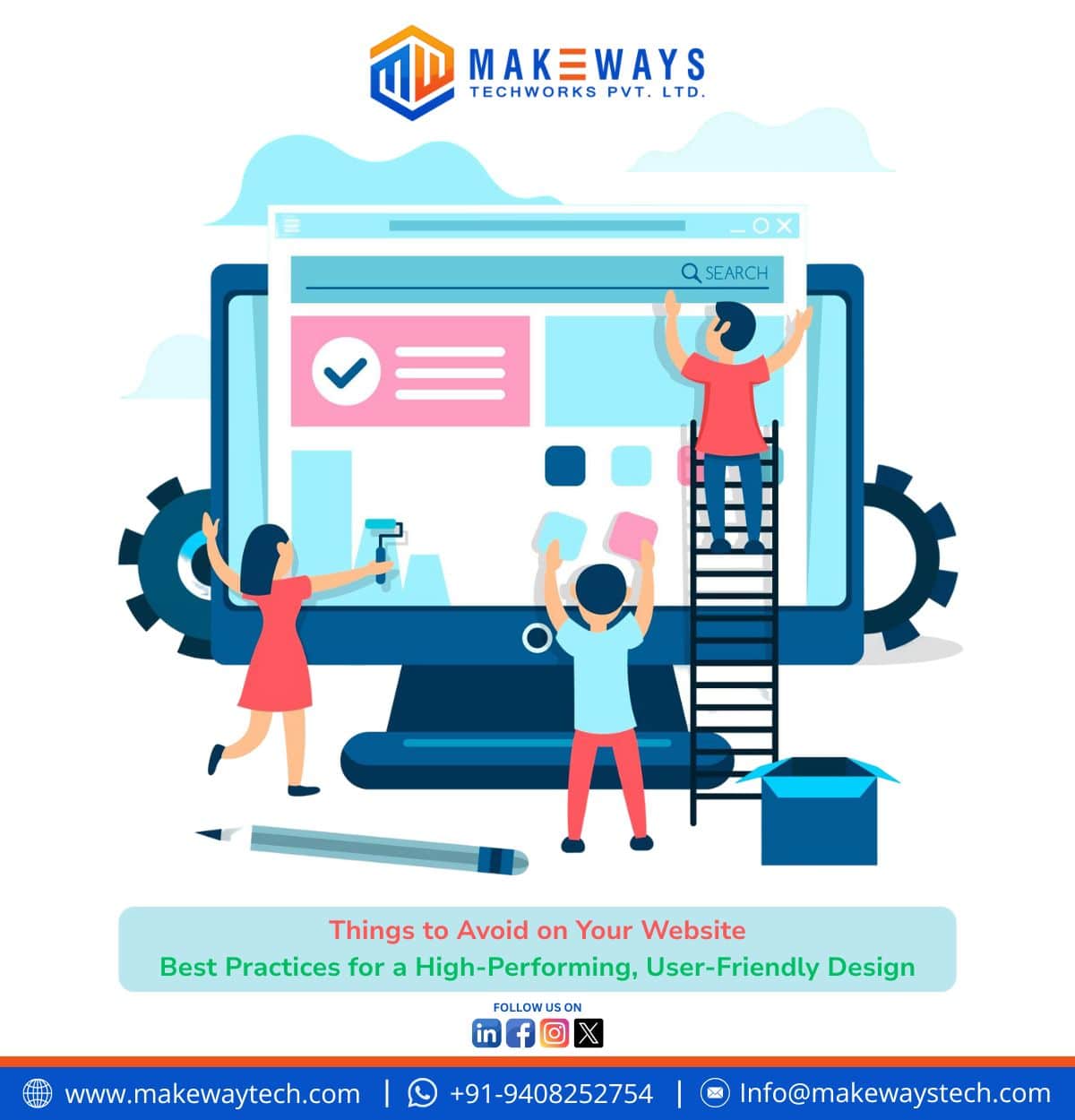Your website is often the first impression your business makes – and in today’s fast-paced digital world, first impressions happen in seconds. A beautifully designed, fast-loading, and user-friendly website can elevate your brand and boost conversions. But even the most visually appealing websites can fail if they include elements that frustrate users, slow performance, or hurt SEO.
Let’s dive into the common website mistakes you should avoid – and the best practices to design a site that truly works for your audience.
❌ 1. Vague Homepage Headers
Your homepage header is the first thing visitors see. If it doesn’t clearly explain what your company does within 5 seconds, you’ve already lost potential customers.
Best Practice: Craft a clear, benefit-driven headline. Tell visitors exactly who you are and how you can help them. Avoid jargon; be real, specific, and engaging.
❌ 2. Generic Navigation Labels
Navigation is your website’s roadmap. Labels like “Products,” “Solutions,” or “Services” sound fine—but they don’t actually tell users what they’ll find.
Best Practice: Use descriptive labels such as “Web Design Services,” “AI Chatbot Solutions,” or “Mobile App Development.” It improves user clarity and boosts SEO.
❌ 3. Homepage Slideshows
Those big rotating carousels might look fancy, but let’s be honest—users rarely click beyond the first slide.
Best Practice: Instead of slideshows, use one strong, static hero image or video with a powerful call-to-action that focuses on your core message.
❌ 4. Stock Photos of People
Everyone has seen the same stock photo of “the smiling team shaking hands.” It’s not inspiring—it’s inauthentic.
Best Practice: Use real photos of your team, your workspace, or your clients. Authentic visuals build trust and create stronger connections with your visitors.
❌ 5. Dates on Blog Posts
Adding dates can make great content appear old and irrelevant, even when it’s still valuable.
Best Practice: If your content is evergreen, remove the date or update it regularly to keep it fresh. This keeps users engaged and improves your SEO rankings.
❌ 6. Press Releases
They might look professional, but they’re typically written for media outlets—not for your website visitors. Most users skip them.
Best Practice: Turn announcements into engaging blog posts or case studies that highlight value, achievements, or success stories in a conversational tone.
❌ 7. PDF Files for Key Content
PDFs are hard to track, load slowly, and offer a poor mobile experience. They also don’t rank well in search results.
Best Practice: Publish all key information directly on web pages with SEO-optimized content and visuals. Reserve PDFs only for downloadable guides or lead magnets.
❌ 8. Testimonials Pages
A standalone “Testimonials” page is one of the least-visited pages on most websites.
Best Practice: Integrate testimonials strategically across your site — on the homepage, service pages, or near CTAs — to build credibility where it matters most.
❌ 9. Email Links
Direct email links like “mailto:[email protected]” attract spam and can’t be tracked effectively.
Best Practice: Use contact forms or CRM-integrated buttons to capture leads and measure engagement. You’ll reduce spam and gain better conversion insights.
❌ 10. Meaningless Subheads
Subheads aren’t just for visual breaks; they play a key SEO role. Generic ones like “Our Process” or “What We Do” don’t help users or search engines.
Best Practice: Use keyword-rich, descriptive subheadings that explain what each section covers — this improves readability and ranking potential.
❌ 11. Dead-End “Thank You” Pages
A simple “Thanks for submitting!” page is a missed opportunity.
Best Practice: Turn your thank-you page into a conversion tool. Suggest related content, offer a free resource, or guide users to their next step.
💡 Final Thoughts
A great website is more than good visuals — it’s about experience, clarity, and trust. By removing these outdated practices and focusing on purposeful design and content, your website will not only look better but perform better too.
At MAKEWAYS TECHWORKS, we help businesses craft seamless digital experiences with:
⚡ UI/UX design focused on conversion and clarity
💻 Web & mobile app development built for performance
☁️ Custom software solutions tailored to your business goals
🔒 Cybersecurity, cloud integration, and SEO optimization for long-term success
Let’s make your website a growth engine, not just a digital brochure.
🌐 Visit us: www.makewaystech.com
📧 Get in touch: [email protected]
#webdesign #uxdesign #webdevelopment #digitalgrowth #websitetips #seooptimization #businessgrowth #makewaystechworks #uidesign #websitebestpractices #mobileappdevelopment #branding #creativedesign
